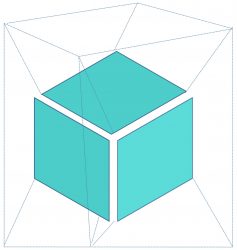For most people book annotations are considered a nuisance. However, most pupils or students mark their so-called textbooks, which contain many images nowadays anyway. A good mindmap, summary of text, highlighting or critical comments may be part of their day-to-day working with a book. Some editors facilitate this using broad margins and more space between lines. Working through a text can take multiple forms and books have allowed over centuries different kinds of their usage.
There is yet another underexplored usage of books. On printed volumes annotations of previous readers may serve as a guide to a script of places, thoughts or material of particular importance. I have always found annotated copies of other readers interesting in their own right. Reading an annotated copy felt like reading another person’s mind, thought or learning process.
A modern view of books as a tool of communication might extend this perspective to study annotations of several readers on the same copy. Just like we comment today in word processing on texts from collaborators or students. Books are a means of communicating with other people or machines (AI) usually with the aim of spreading ideas, content, horror or pleasure.
Therefore, I am always happy to find annotated versions of a book, especially of prominent authors. It sometimes feels like reading a “partition”, a transcript of music which contains the comments or fingering of the reader or the performing musician. The BNF has a lot of such special copies in its archives, usually found in the donations of persons or prominent authors and their families to the archives. This can be put together to make an interesting exhibition of the process of thinking and writing and of special treasures – annotated books.
Image Bibliothèque nationale de France BNF, collection, “Annotations by Jean Racine on Homer “Ilias“.


